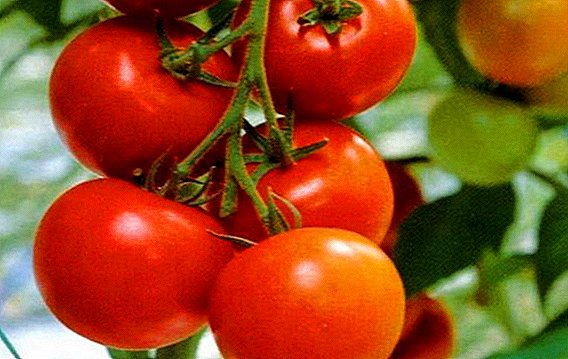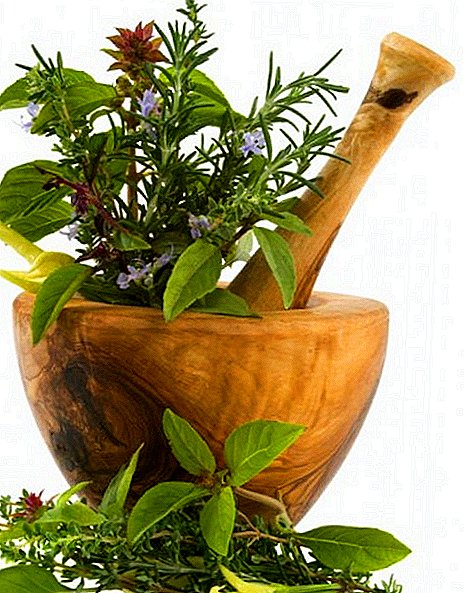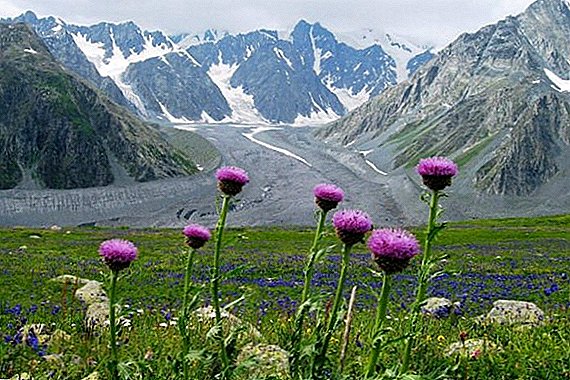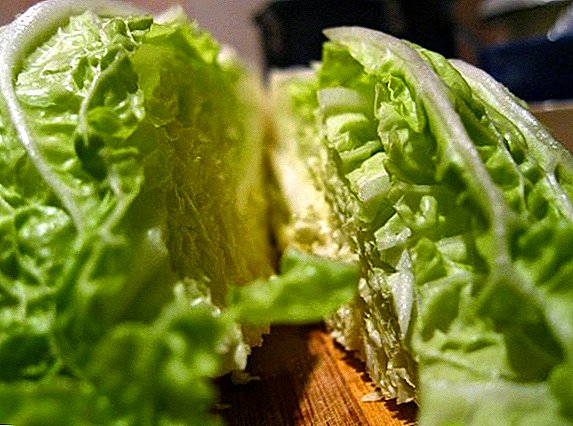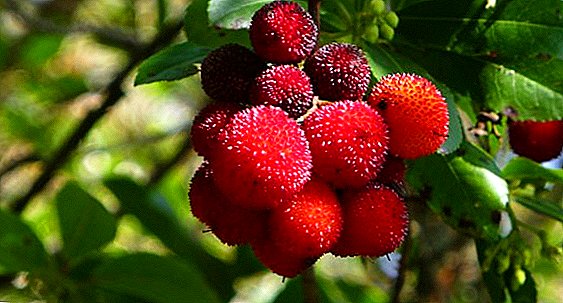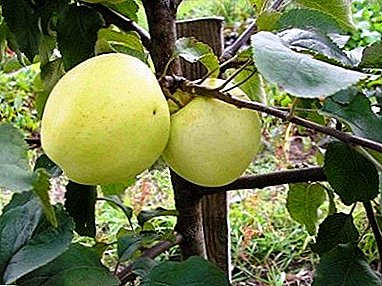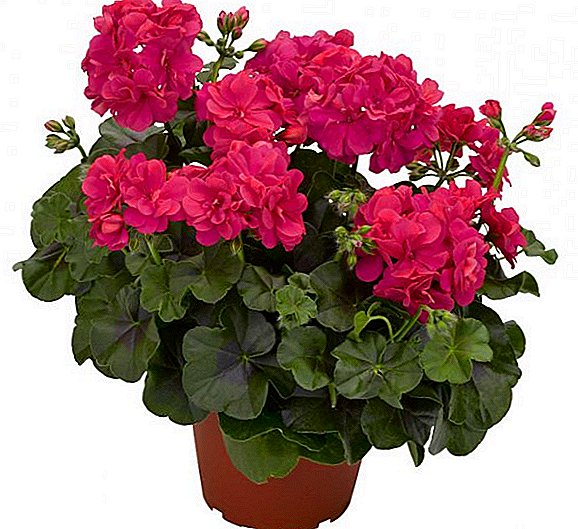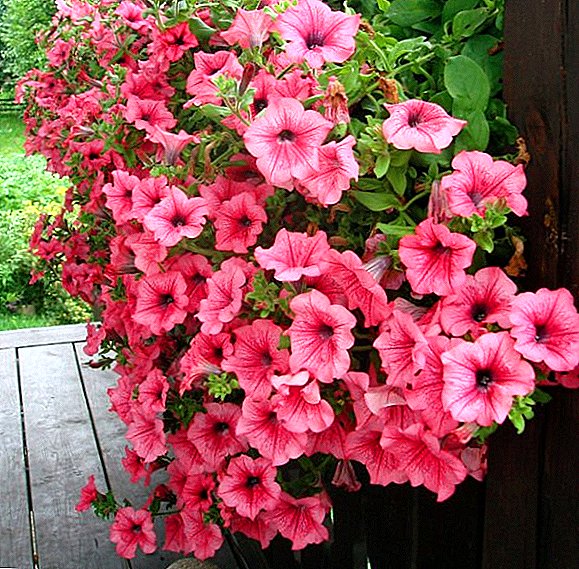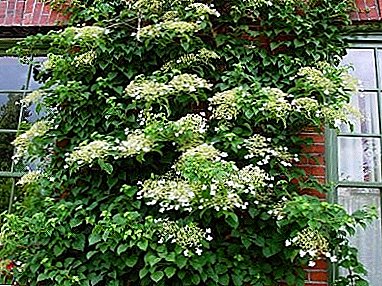
In the natural conditions of Sakhalin and Japan, this hydrangea - Deciduous vine with air roots and suckers, capable of climbing rocks and trees, and on open flat areas - to climb along the ground. The length of her shoots reaches 25 meters.
Description and characteristics of the variety

In culture this plant is windproof, easily carrying a polluted atmosphere - a beautiful vertical "landscaper" with fragrant honey inflorescences. In autumn, the foliage acquires a delicate yellow color.
The domesticated "climber" is represented by a variety of decorative, richly flowering and variegated forms, including frost-resistant.
So, the foliage of hydrangea curly Miranda decorated with an uneven yellow or yellow-cream border, and "Take E Chance" has a white border or white-marble color of the entire sheet plate. Both varieties are resistant to typical temperature conditions of middle-belt winters.
Planting and care of curly hydrangea
Choosing a place
Place for planting climbing hydrangea for vertical gardening should provide adequate support (wall, arch, tree trunk) and enough good lighting - not only direct, but also diffused light, up to a penumbra.
Due to competition for soil moisture, the proximity of large trees and garden shrubs is undesirable.
This flowering vine can also become a ground cover plant that strengthens the slopes.
Priming
Soil should be enough light, fertile, well drained, with an acid reaction - for example, you can use a mixture of peat, humus and garden soil, or mix humus, fertile land, peat and sand in proportion 2:2:1:1.
 Landing
Landing
The best time to land in open ground - early spring or autumn. The best option is two to three year old saplings. The distance from one plant to another in a group planting is one meter.
Planting pit size should provide sufficient space for the growth of the root system of the seedling. The usual scale is 40 cm in length and width, 50 cm in depth.
A ten-centimeter drainage layer of pebbles, expanded clay, brick or ceramic combat is laid on the bottom.
In the prepared landing pit, a layer of soil mixture 10–15 cm thick is placed, and then a carefully straightened moistened root system, which will grow mainly in breadth.
Dust the soil, carefully sealing it. As a result root neck should be flush with the soil surface - but not deeper.
ATTENTION: abundantly watered, then the surface of the earth is mulched peat chips or crushed bark. This last operation is necessary so that the soil under the bush longer retains moisture.
Watering
IMPORTANT: Optimum irrigation water should be soft, ideal - rainwater irrigation.
 Water from the water supply network should be well settled and warmed up, and from time to time it is useful in it. add a small amount of lemon juice or vinegar.
Water from the water supply network should be well settled and warmed up, and from time to time it is useful in it. add a small amount of lemon juice or vinegar.
In dry summers, systematic abundant watering is needed: two buckets of water per vine each weekly.
Spraying
In dry summer, young saplings need, in addition to watering, regular spraying.
Top dressing
Plant during the period of active growth responds well to monthly feeding complex mineral fertilizers that can be supplemented with organic compounds.
Growth and pruning
Young plants develop slowly and only by the age of three begin to form really long powerful shoots.
 Adult vine grows fast on vertical supports (up to a meter per season) requires regular intensive formative pruning. At the same time, the main stems are properly guided and tied up, and the "wrong" ones are cut off, stimulating the further growth of new shoots in the right direction.
Adult vine grows fast on vertical supports (up to a meter per season) requires regular intensive formative pruning. At the same time, the main stems are properly guided and tied up, and the "wrong" ones are cut off, stimulating the further growth of new shoots in the right direction.
To ensure maximum "coverage area" and powerful inflorescences, they carry out a strong pruning in early spring, leaving part of the shoots with only two to six buds.
Wintering
Adult curly hydrangeas do not need a winter shelter, but young plants it is better bend down to the ground and cover with spruce branches. It is also useful to mulch the root zone of the peat crumb.
Bloom
The flowering season is summer: June July.
Coloring inflorescences depends on the acidity of the soil: white in neutral ground flowers get blue shades in acidic substrate.
This property of hydrangeas is widely used, especially since acidified, soft water is beneficial for plants.
Flowers "blue" as a special soil dye, which is commercially available.
 Breeding
Breeding
Seeds of climbing hydrangea, as a rule, ripen in the middle lane, but the seed propagation method is used infrequently due to the short period during which the seeds remain viable. Sowing comes in this case in the fall. As a result seed germination and seedling conservation requires great effort to maintain the light, temperature and humidity conditions. Therefore, these hydrangeas are practically propagated. vegetatively: layering and cuttings.
- Reproduction by layering. In early May or in August, the lower branch is bent to the ground, slightly incised in the middle and fixed. Then slightly buried and added dropwise in this place. The top of the branch is tied to a support in order to give it a vertical position. By next spring, the prikopannaya part forms a sufficient root system and then the new plant can be separated from the parent.
- Reproduction cuttingsand. Summer, June, cuttings up to 15 cm in length are cut from woody shoots. The lower sections are treated with a root formation stimulator. Obliquely planted in nutrient soil and cover; maintain humidity, air and, before the formation of the first new shoots, protect from direct sunlight. Rooting, as a rule, takes no more than a month.
Diseases and pests

Hydrangea on the site with optimal conditions for it is resistant to disease.
If the soil is limestone or supersaturated with humus, the plant may develop chlorosis, in which the leaves, with the exception of the central vein, become izhelta-light.
In this case, spend watering potassium nitrate solution with a concentration of 4g / l, and after 3 days - ferrous sulfate solution the same concentration.
Downy mildew, in which dark oily, gradually spreading spots are formed on the leaves and stems, affects the hydrangea at a temperature of 18-20 degrees in combination with high atmospheric humidity.
An effective remedy for this disease is spraying with copper-soap solution: 15 g of copper sulfate and 150 g of green soap on a bucket of water.
Gray rotthat also develops in summer with high humidity, requires the removal of affected leaves and shoots followed by treatment of the bush fungicides.
 If the humidity is low, the plants settle aphid and spider mitesthat can be removed with soapy water.
If the humidity is low, the plants settle aphid and spider mitesthat can be removed with soapy water.
However, the most effective in such cases, the use of systemic insecticides.
As a preventive measure, one should get rid of weed vegetation serving as a haven and breeding ground for these pests.
Curly (stemmed, climbing) hortensia is one of the few frost-resistant lianas that bloom abundantly in the middle summer in the hot summer.
Growing spectacular variegated, aromatic-honey varieties in horticultural culture does not present much difficulty.
The plant, planted in acidified, fertile, drained, well-moistened soil, responds to optimal conditions by violent growth and lush flowering.
A photo
More photos of hydrangea curly see below:




Useful information
You can get acquainted with other materials about hydrangea garden:
- How to properly care for bobo paniculate hydrangea? Growing and preparing for winter
- How to properly care for Hydrangea Limelight?
- How does the Duboliferous hydrangea overwinter?
- Frost-resistant hydrangea Pinky Winky on your site
- Hortensia paniculata grandiflora - features of care and reproduction in the garden plot
- Hydrangea tree Annabelle - snow-white decoration of your site
- Tree hydrangea in your garden - planting and care, breeding, wintering
- How to make friends with serrated hydrangea?
- Japanese hydrangea Kyushu in your garden
- Frost-resistant large-leaved hydrangea
- How to care for a panicle hydrangea phantom? Planting, wintering, breeding
- How to properly care for panilla hydrangea vanilla fraze?
- Fragrant "princess" hydrangea paniculata in your garden: features of care
- Secrets of breeding garden hydrangea
- Garden hydrangea: planting and care, neighborhood in the garden
- Do not let the garden hydrangea freeze! How to cover the hydrangea for the winter?
- How to protect the garden hydrangea from diseases and pests?



